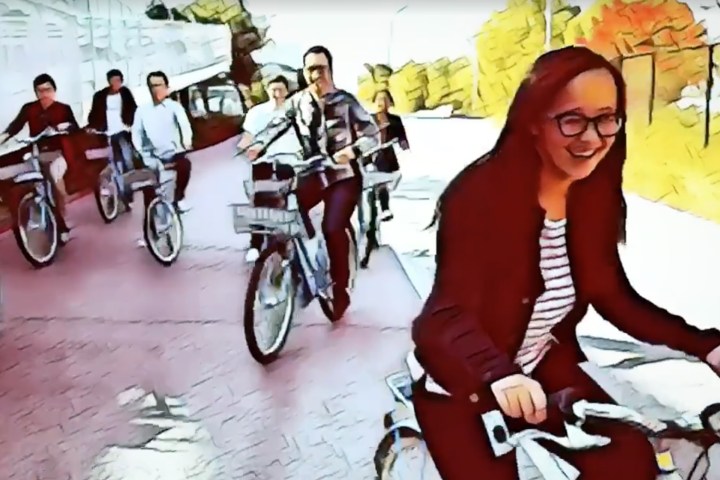
Instead of Snapchat, the inspiration for these Live video filters comes from Prisma — an AI-powered photography app that boasts a range of artistic graphics that can be applied to both images and video. Facebook is currently testing style transfers as part of an update that gives added prominence to your smartphone camera within its flagship app in Ireland.
Unlike Snapchat (the app that pioneered filters or, as it calls them, “lenses”), Facebook wants to apply the software to live broadcasts in real time and not after you’ve captured a clip. It’s already started doing this with some of its traditional, Snapchat-style filters, but style transfers are — according to
On Tuesday, the company published a new blog post explaining in-depth how the style transfer technique works in real-time. Instead of waiting for the image to be processed on huge computer servers in data centers, Facebook claims it has developed a world-first: a deep-learning platform on mobile that puts the cutting-edge technology in the palm of a user’s hand.
Facebook is essentially embedding its neural network (a machine learning system, loosely modelled on the human brain, that learns by consuming vast tons of data) into its

“The style-transfer tool in the camera is the result of a marriage between two technologies: the Caffe2go runtime and style-transfer models,” write Facebook research scientists Yangqing Jia and Peter Vajda in their blog post. “It took both technologies to make it possible for you to feel like you have Van Gogh’s paintbrush in your hand when you pick up your phone to shoot a video.”
In a second blog post, Facebook CTO Mike Schroepfer details the company’s vision for the mobile AI: “We can create gesture-based controls, where the computer can see where you’re pointing and activate different styles or commands. We can recognize facial expressions and perform related actions, like putting a “yay” filter over your selfie when you smile.”
Facebook CEO Mark Zuckerberg demoed the style transfer feature in October, shortly after which
Facebook has not shied away from boasting about its plans for the live-streaming format, and video in general. Last month, the company’s chief product officer Chris CoxCox claimed it now predicts video will generate 70 percent of traffic across Facebook’s properties — such as Instagram, WhatsApp, and its flagship social network — in the next five years. Coincidentally, WhatsApp launched video calling for Android devices in late October — indicating that
Updated on 11-08-2016 by Saqib Shah: Added news of Facebook’s reveal of AI for mobile app
Editors' Recommendations
- WhatsApp is copying two of Zoom’s best video-calling features
- How to go live on Facebook
- Facebook says new Portal video-chat devices are coming in the fall
